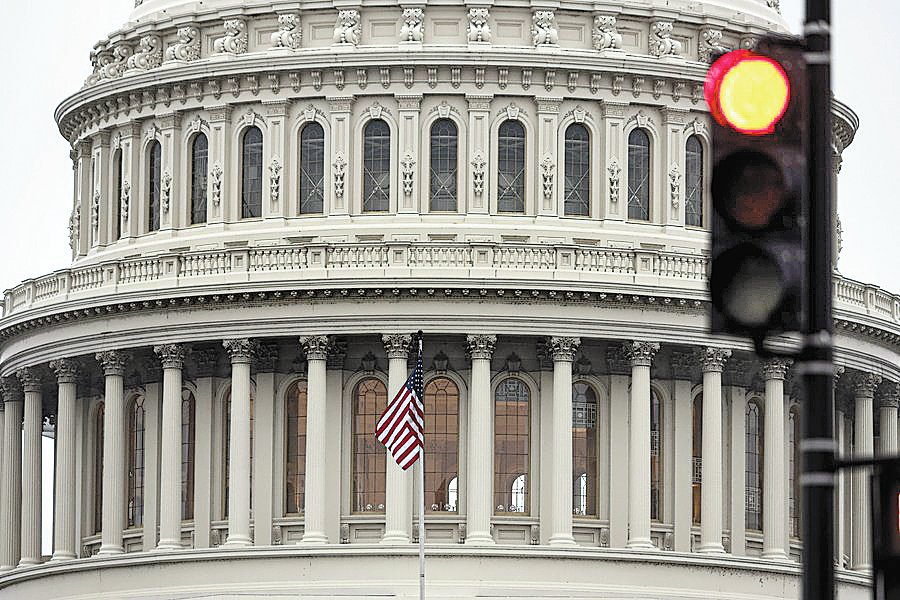By Zhong Sheng, People’s Daily
The United States’ domineering and coercive practices in technology are continuing escalating. The U.S. Department of Commerce recently announced an investigation into the semiconductor supply chain and national defense industrial base in the name of reducing national security risks, to assess the extent of their reliance on Chinese chips.
It was also reported that the U.S. has even requested Dutch chip equipment company ASML to halt exports of lithography machines to China before the relevant “bans” take effect.
While the U.S. claims to advocate fair competition, it constantly sets obstacles for the technological development of other countries. The country always groundlessly accuses other countries of engaging in “economic coercion,” while its own economic coercion has seriously harmed the interests of even its allies.
According to reports, the investigation initiated by the Bureau of Industry and Security under the U.S. Department of Commerce focuses on traditional chips that are not cutting-edge but still crucial to the industry.
Unlike previous U.S. restrictions on chip sales to China, this time it will scrutinize the usage and procurement of traditional chips manufactured by China in key U.S. industries.
To restrict China’s acquisition of advanced semiconductors, the U.S. is implementing a strict policy that prohibits both the sales and purchases of relevant products, which severely impedes the normal trade exchanges between chip, chip equipment, materials, and component companies from various countries.
This harms the legitimate rights and interests of not only Chinese enterprises but also semiconductor companies from other countries, including the U.S. It is typical economic and technological bullying and a serious violation of international trade rules.
The semiconductor industry is highly globalized, and the formation and development of its supply chain is the result of market forces and corporate choices. The United States, against market laws and the will of companies, is attempting to block the semiconductor supply chain with a “small yard and high fence” strategy, severely disrupting the landscape of the global semiconductor industry and seriously impacting the security and stability of international industrial and supply chains.
According to data from the U.S. Semiconductor Industry Association, China’s semiconductor procurement in 2022 amounted to $180 billion, accounting for over 1/3 of the global total and making China the largest single market worldwide. The Chinese market is irreplaceable, and withdrawing from it is not a feasible option. This is a consensus among global semiconductor companies.
The U.S. arbitrary act of isolating the Chinese market will not succeed and will eventually backfire. The U.S. Semiconductor Industry Association pointed out that excessive unilateral control may harm the U.S. semiconductor ecosystem.
Colette Kress, chief financial officer of U.S. chip company NVIDIA believes that long-term bans on exporting AI chips to China would cause the U.S. chip industry to permanently lose many opportunities.
The U.S. act to suppress and contain China’s technological development at the sacrifice of harming itself is a manifestation of its deep-rooted Cold War mentality. By excluding China from critical supply chains through state behaviors and restricting China’s ascent to higher segments of the value chain, the U.S. is indeed politicizing, instrumentalizing and weaponizing economic, trade, and technological issues to serve the hegemonic purpose of containing China’s growth.
The U.S. disguises its “small yard and high fence” strategy as an approach to safeguarding national security, and finds various excuses to coerce other countries into implementing technological blockades against China.
This has raised widespread concerns and criticism. Some said the U.S.’ efforts to weaponize its technological superiority in order to confront China seem to be putting strain on its alliances.
According to a report by The New York Times, government officials in European countries are concerned that preventing European companies from entering China, one of the world’s largest and most dynamic technology markets, could harm the interests of these enterprises.
Development of China is innovation-driven. Stifling China’s technological progress is nothing but a move to contain China’s high-quality development and deprive the Chinese people of their right to development. China’s development and growth, driven by its own inherent logic, will not be stopped by external forces.
The Chinese nation has the proud tradition of standing up for itself. Suppression and containment will only strengthen the will and boost the morale of the Chinese people.
The restrictions imposed by the U.S. on China’s technological innovation will only strengthen China’s determination to achieve high-level self-reliance in science and technology.
Insiders in the semiconductor industry have openly opposed the U.S. export control measures targeting China. They believe that the more pressure the U.S. exerts on the Chinese people, the more likely they will double their efforts.
Win-win cooperation has been the true narrative of the 45-year diplomatic relations between China and the U.S., and it should also be a shared goal of the two sides.
Adhering to Cold War mentality and zero-sum game thinking, and engaging in economic and technological bullying, will not bring progress to the U.S. Only by broadening horizons and realizing that the world is big enough for the two countries to develop themselves and prosper together, can they better serve their respective development and prosperity through mutually beneficial cooperation.
(Zhong Sheng is a pen name often used by People’s Daily to express its views on foreign policy and international affairs.)






